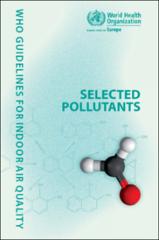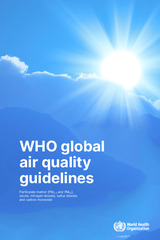Resourses

WHO guidelines for indoor air quality: dampness and mold
PDF document, 248 pages, English.
Microbial pollution is a key element of indoor air pollution. It is caused by hundreds of species of bacteria and fungi, in particular filamentous fungi (mold), growing indoors when sufficient moisture is available. This document provides a comprehensive review of the scientific evidence on health problems associated with building moisture and biological agents. The review concludes that the most important effects are increased prevalences of respiratory symptoms, allergies, and asthma as well as perturbation of the immunological system. The document also summarizes the available information on the conditions that determine the presence of mold and measures to control their growth indoors. WHO guidelines for protecting public health are formulated on the basis of the review. The most important means for avoiding adverse health effects is the prevention (or minimization) of persistent dampness and microbial growth on interior surfaces and in building structures.

WHO Guidelines for Indoor Air Quality: Selected Pollutants
PDF document, 484 pages, English.
This book presents WHO guidelines for the protection of public health from a number of chemicals commonly present in indoor air. The substances considered–benzene, carbon monoxide, formaldehyde, naphthalene, nitrogen dioxide, polycyclic aromatic hydrocarbons (especially benzo[a]pyrene), radon, trichloroethylene, and tetrachloroethylene–have indoor sources, are known for their hazardousness to health and are often found indoors in concentrations of concern to health.
For each substance, the chapter covers a general description, the sources, and pathways of exposure, the indoor-outdoor relationship, kinetics and metabolism, the health effects, a health risk evaluation, the guidelines, a summary box, and references.
These guidelines are targeted at public health professionals involved in preventing the health risks of environmental exposures, as well as at specialists and authorities involved in the design and use of buildings, indoor materials, and products. They provide a scientific basis for legally enforceable standards.

WHO global air quality guidelines: particulate matter (PM2.5 and PM10), ozone, nitrogen dioxide, sulfur dioxide, and carbon monoxide
PDF document, 300 pages, English.
Clean air is fundamental to health. Compared to 15 years ago, when the previous edition of these guidelines was published, there is now a much stronger body of evidence to show how air pollution affects different aspects of health at even lower concentrations than previously understood. But here’s what hasn’t changed: every year, exposure to air pollution is still estimated to cause millions of deaths and the loss of healthy years of life.
The burden of disease attributable to air pollution is now estimated to be on a par with other major global health risks such as unhealthy diets and tobacco smoking. In 2015, the World Health Assembly adopted a landmark resolution on air quality and health, recognizing air pollution as a risk factor for noncommunicable diseases such as ischaemic heart disease, stroke, chronic obstructive pulmonary disease, asthma, and cancer, and the economic toll they take. The global nature of the challenge calls for an enhanced global response.